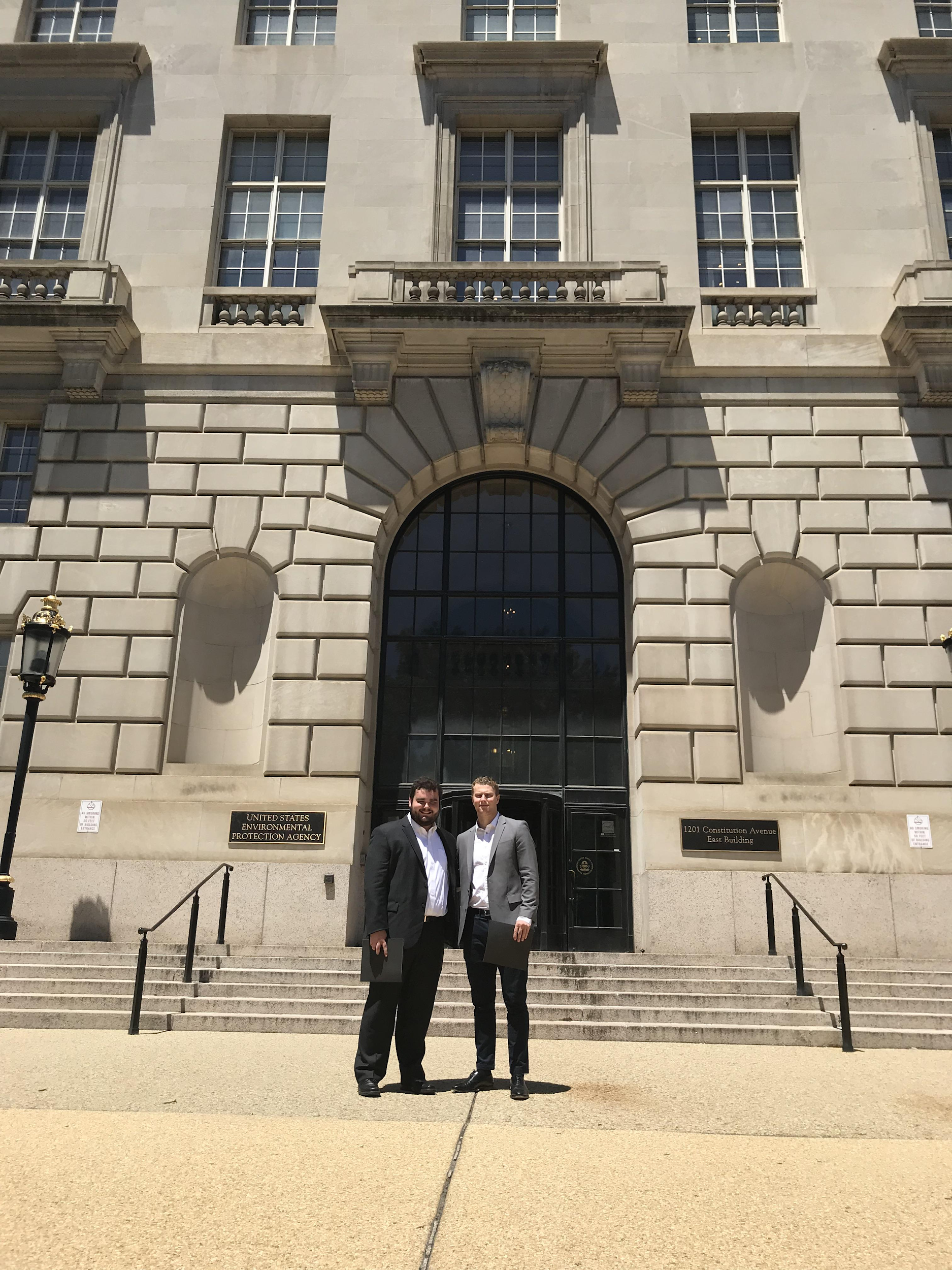Good Climate News this Week: Rules to Cut Pollution, an Offshore Wind Transmission Plan, Emissions Reduction in the EU, and More!
Apr 15, 2024
 On June 14, LCV’s government affairs interns—Michael Overton, Sydney Colopy, and Milo Donovan—testified at the EPA, opposing a proposed rule to change the chemical safety standards of the Risk Management Program (RMP), which were updated in response to the deadly 2013 explosion at a fertilizer plant in West, Texas. The rule change would reverse critical improvements to chemical facility safety standards and is yet another example of the Trump administration prioritizing industrial interests over the health and safety of our communities.
On June 14, LCV’s government affairs interns—Michael Overton, Sydney Colopy, and Milo Donovan—testified at the EPA, opposing a proposed rule to change the chemical safety standards of the Risk Management Program (RMP), which were updated in response to the deadly 2013 explosion at a fertilizer plant in West, Texas. The rule change would reverse critical improvements to chemical facility safety standards and is yet another example of the Trump administration prioritizing industrial interests over the health and safety of our communities.
Each intern’s testimony revealed ways this rule change would put communities across the country in unnecessary danger, especially first responders, communities of color and low-income communities:
As Sydney put it: The 2017 RMP rule also requires that facilities provide emergency planners and first responders with information needed to safely respond to and mitigate a chemical disaster, but the EPA proposes removing that requirement. We should be pushing for better coordination between responders and facilities, not putting responders, workers, and nearby residents in danger by eliminating these requirements.
Milo also pointed out: Worst of all, some populations bear a disturbing portion of the risk when it comes to chemical facilities, the true extent to which Pruitt’s proposed rule refuses to acknowledge. The poverty rate around these facilities is 50 percent greater than the US average. In fact, low-income children of color are more than twice as likely to live within one mile of these dangerous facilities, compared to those above the poverty line. In total, around 20 million children, who are more susceptible when exposed to toxic chemicals, attend schools in the vulnerability zones of high-risk facilities.
A strong RMP backed by sensible safety solutions is essential to both preventing accidents as well as mitigating the consequences when chemical incidents do occur. Chemical facility incidents could happen anywhere at any time, and it is in all our interests to do what we can to ensure safety at and around chemical facilities:
Michael shared a story that hit close to home: Since the EPA first delayed the January 2017 rule, at least 46 incidents have occurred across the country. One of these incidents occurred when both a fire and chemical leak broke out at the House of Raeford plant in Mocksville, NC, just a few short miles from my home in Winston Salem. Only by luck and timing, with the leak occurring in the middle of the night, were injuries limited. With incidents like this occurring regularly even now, it is wholly irresponsible for the EPA to eliminate instruments like the Safer Technology Alternatives Assessment, which works to ensure chemical facilities adopt inherently safer technologies and processes to prevent future chemical releases. Without these safeguards, we can expect more incidents like that which occurred in Mocksville or worse.
What do the government affairs interns think we ought to do about the administration’s attempt to undermine safety standards at facilities that operate with or store potentially dangerous chemicals? In their testimonies, they all called for the EPA to abandon the proposal to change the RMP safeguards and left us with these insights:
A thought from Sydney: The EPA has power under the Clean Air Act to implement chemical release regulation…the economic benefits of fewer disasters outweigh the costs of implementing safer practices. Strong chemical facility safety standards are good for workers, communities and industry.
Michael’s conclusion: The EPA’s proposed rule would be a major step back in chemical safety and is one which our health and wellbeing cannot afford.
Milo’s reasoning: We cannot afford to let the EPA continue ignoring its core mission by placing industrial interests above human health and safety.